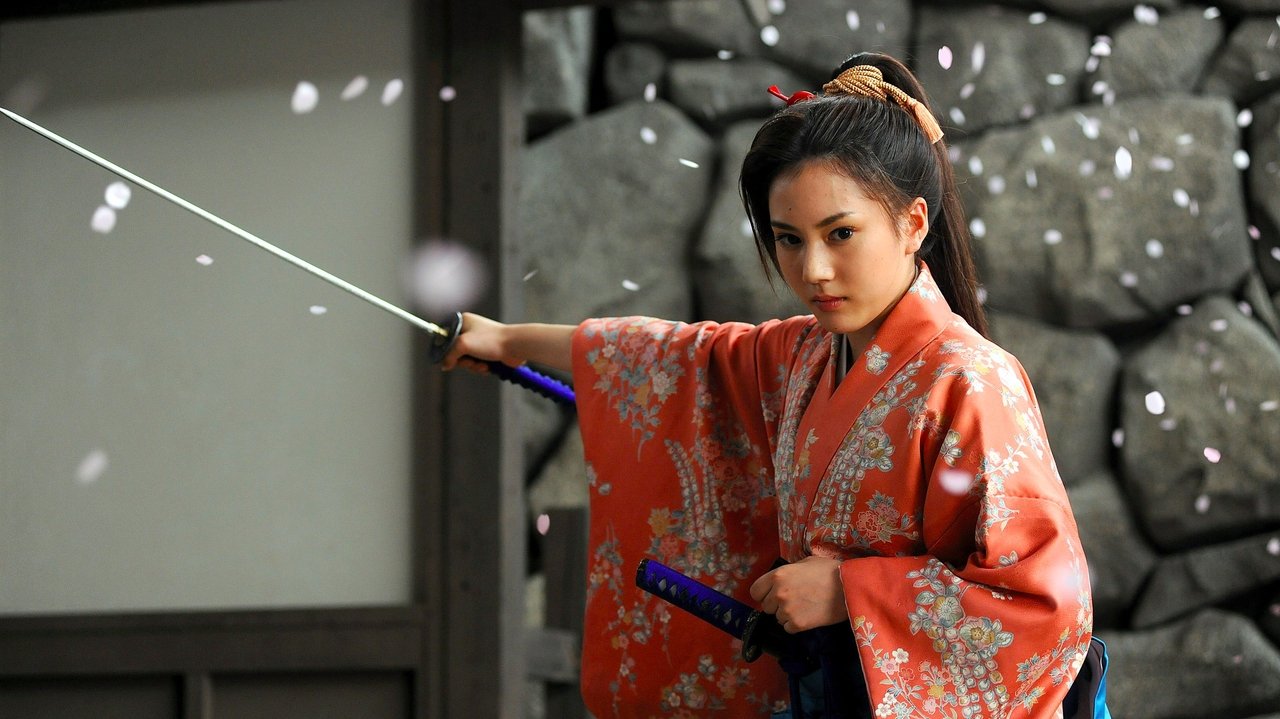Dynamixor
The performances transcend the film's tropes, grounding it in characters that feel more complete than this subgenre often produces.
AshUnow
This is a small, humorous movie in some ways, but it has a huge heart. What a nice experience.
Brennan Camacho
Mostly, the movie is committed to the value of a good time.
Billy Ollie
Through painfully honest and emotional moments, the movie becomes irresistibly relatable
Clinton Yuen
Kamiyama Seiich is a veteran samurai actor of 40 years specializing in the drop dead role of "kirare-yaku". A young producer cancels the long-running series in favor of a more youth-oriented subject matter. This leaves Kamiyama and the bulk of his aging colleagues out of work. While Kamiyama gets sympathy from the managing director, a long-time colleague and cohort, he receives hostile and disrespectful treatment from the new generations of actors, directors, and producers. Facing a lack of work, Kamiyama is relegated to performing his kirare-yaku with his fellow aging actors live in front of tourist in the studio park performance. His performance catches the eye of a young and up-and-coming actress, Iga Satsuki. She begs him to teach her the art of swordplay. Initially reluctant, he agrees and soon comes to embrace her as his protégé. His advice to her is that if you put your best efforts forward, you will always receive help. With her training, Iga soon rises to become a top star. Eventually the park show closes forcing Kamiyama into retirement. A few years later, Iga is asked to star in a remake and reunion of the long-running samurai series that Kamiyama became famous for. Iga accepts on condition that Kamiyama play the lead kirare-yaku role. During the first take, Kamiyama flinches in his performance. The director immediately decides to cut Kamiyama's scenes and role. The same producer who eliminated the original series, ironically comes forth to overrule the director. As the actors retake their positions for the next take, the lead samurai actor asks Kamiyama if he is OK. Kamiyama replies yes but comments that his performance is "rusty." This derogatory comment sparks the best in the lead actor and the rest as the veterans once again demonstrate their experienced, well honed-in art. In the finale, Kamiyama enacts his famous kirare-yaku. It could be interpreted that his final performance was his best and also his last breath. This movie is metaphoric of the modern times when the younger generation, eager for instant fame and success without paying their dues, puts them at odds with veteran actors whom they view as threats to their job security and careers.
WILLIAM FLANIGAN
Viewed at CineMatsuri 2015 and Streaming. Director Ken Ochiai's second theatrical film outing presents a one-of-a-kind story line and does so on many dramatic and technical levels. This is a tale of stunt men who specialize in supporting samurai movies shown in theaters and on TV. Like the real samurai before them, movie samurai are now all but extinct. But there is one last hurray to be had courtesy of a former novice stunt women who has moved on to become a major film star. Drifts toward melodrama and melancholy ("normally expected" given the downer subject matter) are held in check by a tight script and the Director's pro-active disciplining of his actors. Acting is exceeding professional (not surprising, since all but one are seasoned professionals). Actress Chihira Yamamoto is the exception. This appears to be her first theatrical film and acting debut. Her performance (line readings, facial expressions, body language, and physical action) is across-the-board astonishing. The movie contains slow intervals that attempt to dive more deeply into character development. Thankfully, there are only a few. The Director seems to have pursued a rigorous integration/exploitation of Japanese and American film-making cultures drawing on the best from each for the viewer's pleasure. (Likely the most successful venture of this kind to date!) As an added treat, the movie shows the functioning of behind-the-scenes production processes traditionally employed in the creation of movies by Kyoto-based studios (which are not the same as those used by Tokyo-based studios). Not unexpectedly, some processes are fairly similar to but others are quite different from contemporary methods used by American studios. During a post-showing Q&A with the Director (a graduate of two of the top film schools/programs in California), he described the challenges when confronting the super efficient Kyoto filming traditions where each scene is shot just once (with a single camera)! Cinematography (color, wide screen) and lighting are excellent. Film score is adequate (it neither over or under whelms). ADR (looping) and sound field production (5.1 channels) are very good. Western dialog (Kansai/Kyoto-Ben) is restrained perhaps to not overwhelm viewers who mostly speak/understand Toyko-Ben. Subtitles are spot on; just the right length to be read in a glance and minimize/avoid undue distractions. For what may be a first, the names of ALL above and below the proverbial line film contributors are translated in the closing credits! Worth re-watching several times. WILLIAM FLANIGAN, PhD.
egburley
Uzumasa Limelight traces the dying Samurai filmmaking tradition of Japan. Akin to American Western movies, in the 50's and 60's Samurai films provided the touchstone for Japanese viewers to the romanticized past of Japan. The film focuses on Kamiyama (played by veteran actor Seizo Fukumoto, known to Western audiences as the silent Samurai guarding Tom Cruze in "The Last Samurai"), a kirareyaku - the actor whose main job is to be killed by the lead star. The story tells with real passion the dying of the tradition, while giving hope as the protagonist hands off the tradition to the next generation through charismatic newcomer Chirhiro Yamamoto, playing Satsuki. Very accessible, and a touching story without sappiness.
mdrocioscott
I'm hoping that this movie has more meaning and nostalgic value to a Japanese audience and that it has just lost something when taken outside its original cultural context. For a foreigner, with no interest in or point of reference to the old-style Samurai TV series whose demise the film laments, it was really going to take something special to grab my interest. Unfortunately the acting is as wooden as the actors' swords, the dialogue torpid and the general premise of the young girl studying under the old extra was just silly. The message of the movie is conveyed crystal clear within the first five minutes (end of an era, no appreciation for old skills, vapid modern culture taking over, etc, etc) but it goes on for another 100 minutes adding nothing more.

